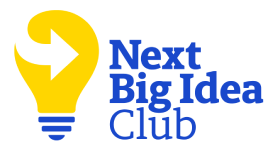READ ON TO DISCOVER:
- Whether you’re a lark, owl, or third bird
- What high fives between basketball teammates can tell us about how to communicate at work
- Why we should always end on a high note
One of the world’s foremost thinkers on business and social science, Daniel Pink is the author of several bestselling books on business, work, and behavior, including most recently, When: The Scientific Secrets of Perfect Timing. He joined Robert Glazer, the host of the Outperform podcast, founder of Acceleration Partners, and author of Performance Partnerships, for a conversation about how to time your life, from the whole year down to the hour.
This conversation has been edited and condensed. To listen to Daniel and Robert’s full conversation on the Outperform podcast, click here.
Robert: I’m curious—what gave you the drive to write Drive?
Daniel: I wrote a book called A Whole New Mind which makes the argument that the set of skills that are necessary in the economy today are shifting from more reductive, SAT spreadsheet kinds of abilities to the less reductive, less algorithmic artistic, empathic, big picture skills. In response to that book, I got a lot of emails from people [asking,] “How do we create organizations that foster these skills, how do we motivate people to do that kind of work?”
I didn’t really have a good answer to that question. I knew a little bit of the research on motivation, so I started looking at it. Once I looked at it in a little greater depth, I was just blown away, because what it said really turned on its head a lot of the things that we believed about motivation.
Robert: So what is it that business leaders don’t understand about motivation?
Daniel: There are number of things. One of them is not understanding the locus of motivation. Many people think that motivation is something that one person does to another, and that’s not right. Motivation is something that people do for themselves—so the task of running organizations, of leading teams, of doing anything where you have responsibility for other people is to put those people into a context in which they can motivate themselves.
“Motivation is something that people do for themselves—so the task of running organizations, of leading teams, of doing anything where you have responsibility for other people is to put those people into a context in which they can motivate themselves.”
There’s a certain kind of reward we use in organizations. Social psychologists call it a “controlling contingent reward,” [but] I like to call it an “if-then reward.” If you do this, then you get that.
Trending: Best Happiness Books of 2025 (So Far)
50 years of social science tells us that if-then rewards are actually very effective for simple tasks or short time horizons—if you know exactly what you need to do and you can see the finish line.
However, the same body of research tells us that if-then rewards simply are not effective for tasks that require more creativity, more conceptual thinking and with longer time horizons. For those kinds of creative tasks, for non-obvious problems, you want to be able to see wider and farther.
Robert: Your new book, When, talks about motivating yourself on a day-to-day basis. You talk about the importance of timing both for doing things within a day and across the timing of your life. I thought we’d start [with] beginnings. One of the things I took away is improving morning routines as a way to build capacity and just perform better throughout the day. You talk about chronobiology and [how] that premise may actually not hold true for everyone. Can you explain what chronobiology is and why it’s important for us to understand our chronotype?
Daniel: Chronobiology is basically the study of our time-based rhythms. Among the things that chronobiologists have discovered is that each of us has a chronotype. That’s a more complicated word for essentially, “Are you more of a morning person, are you more of an evening person, or are you in between?” Somebody who wakes up early and goes to sleep early is colloquially considered a lark. Someone who wakes up very late and goes to sleep very late is colloquially an owl.
What the distribution of chronotypes tells us is that about 15% of the population are strong larks, 20% of the population are strong owls. This means that two thirds of us are in between, and our chronotype actually has a big role in determining how the day unfolds, how our mood and our performance changes over the course of the day.

Robert: Talk a little about the three stages in a day, and why it’s important for people to understand the different tasks to do in each stage, based on their chronotype. That was a really interesting discovery for me, particularly the part about when you’re likely to be paroled or not paroled.
Daniel: We move through the day in three stages. You can see this in measures of mood. There’s a peak (mood goes up), a trough (mood drops considerably), and a recovery (mood goes back up). 80% of us go through in that order. Owls are much more complicated, and will go through in the reverse order—recovery, trough, peak.
During the peak, that’s when we are most vigilant. That makes it the best time for analytic work. That means work that requires heads-down focus, attention, and energy. So that could be writing a report or analyzing data, or something that requires that intense kind of focus, the ability to bat away distractions. We should be doing that kind of work during our peak.
During the trough, [there is a] big drop in mood and a big drop in performance. The book is studded with all kinds of data showing how dangerous that trough can be on the road, in a hospital, in classrooms. So during that trough period, we should be doing more of our administrative work, work that doesn’t require a massive amount of brain power—filling out reports or answering a routine email.
Then during the recovery, which for most of us is the late afternoon and early evening, we see a rise in mood, but no greater vigilance, which actually makes a potent combination. That makes it a good time for addressing what psychologists call “insight problems.” Those are problems with really non-obvious solutions. People tend to solve those problems better during recovery—not during the trough, but during their not-optimal times.
Robert: That has major implications for parents and for leaders, because there are some things that we can control what time of day we do them, and there’s others that we can’t. A point you made really strongly was that organizations, particularly schools or companies, [are] so quick to solve a “what” problem, but not a “when” problem. If we knew that smoke in the school building in the morning hurt test scores by 20%, we would fix that in five minutes. But when the data says that waking people up an hour early has the same result, no one seems interested in changing.
Daniel: [The] notion that questions of “when” are less important than questions of “what” is empirically not true. Let’s go back to test scores. There’s an important study out of Denmark [comparing] kids who took standardized tests in the afternoon versus kids who took standardized tests in the morning. Kids who took tests in the afternoon scored as if they missed two weeks of school.
There’s [also] research out of the L.A. Unified School District showing the kids who have math in the morning have a higher G.P.A. and higher test scores than kids who have math later in the day. It makes a material difference. I’m not saying that when people do stuff is more important than what people do or how they do it, but it is as important.
“I’m not saying that when people do stuff is more important than what people do or how they do it, but it is as important.”
Robert: How does timing work on teams or with groups of people, since so much of what we do is reliant on people who may not be the same chronotype as ourselves?
Daniel: This case I looked at was [one of a matter of] synchronization. It was [all about,] “How do teams coordinate with each other in time?” I looked at these folks in India called dabbawalas who do something pretty remarkable. They pick up homemade lunches at people’s apartments in Mumbai and then deliver those homemade launches to loved ones in office buildings throughout downtown Mumbai.
Trending: Why Rest is the Biggest Productivity Hack for Your Brain
They deliver 200,000 lunches every day. They do it without errors so much so that FedEx has studied them, UPS has studied them, there’s a Harvard Business School case study about them. They do 200,000 lunches every day at high levels of accuracy and they do it without barcodes, without GPS, without technology of any kind. How are they able to synchronize? That was one of the puzzles that I was trying to solve. It turns out that when you look at how groups synchronize in time, rowing teams, choirs, there is a set of core principles that are somewhat counterintuitive but endlessly interesting.
One of the elements to synchronization is a sense of belonging. This is true in a lot of the research on teams that belongingness is a huge factor in which teams flourish and which teams flounder. The way that belongingness happens is almost anthropological. It’s through shared rituals, it’s through touch.
“Belongingness is a huge factor in which teams flourish and which teams flounder.”
There’s a study about NCAA basketball players, showing that if you have people watch videos of basketball games, and simply count the touches between players—high fives, low fives, chest bumps, fist bumps—that it actually ends up being predictive of which teams are going to succeed later in the season. But belongingness is fostered with all kinds of things—shared jokes, shared language is incredibly important.
Robert: Midpoints [are] often overlooked. There were some studies where when teams were given a certain amount of time, whether that was a day or a week or a month or six months to solve a problem, most of their urgency and cohesion happened right at the midpoint. Can you talk a little more about that?
Daniel: This is the research of Connie Gersick, who had an inkling about how teams actually operate. The prevailing view, until that time, was that teams start [on a project] and then make steady progress all the way through to the end. What she found was a dramatically different pattern. In the beginning, teams did very, very little. There’s a lot of status seeking and other kinds of behavior like that, but they do very, very little. Invariably she found that that moment when teams really got kicking was the midpoint.
Give a team 34 days to do a project, they get started in earnest on day 17. Give a team nine days, they get started in earnest on day five. There’s something about that midpoint that can be galvanizing.
Robert: If we turn quickly to the macro sense, you write a lot about the timing of big events in our lives such as getting married, writing a book, starting a business. Does life have sort of the same dynamic as an individual day? Does it follow most of the same principles?
Daniel: It doesn’t have the same rhythm as the hidden pattern of a single day but there are rhythms and shapes and patterns over lifetimes. One of them has to do with midpoints. There is across many, many countries what scholars call a U-shaped curve of happiness. There’s no evidence of the so-called midlife crisis, but you do see a slight dip. People are reasonably happy in their 20’s and 30’s, they begin to decline in their 40’s and [in] their 50’s, they really reach bottom. And then over time they begin to get happier and happier.
There are other patterns dealing with the size of people’s social networks and what they prioritize. The metapoint here is that we have to recognize that these temporal forces have a huge effect in the course of a day, but even in the course of the life, that much of our lives are episodic. Whether it’s a relationship, whether it’s a career, a particular job—episodes have beginnings, middles and ends, and each of those three things—beginnings, middles, and ends—exerts a different effect on our behavior.
“These temporal forces have a huge effect in the course of a day, but even in the course of the life, that much of our lives are episodic. Whether it’s a relationship, whether it’s a career, a particular job—episodes have beginnings, middles, and ends and each of those three things—beginnings, middles, and ends—exerts a different effect on our behavior.”
Robert: That leads us into endings and how important they are. Two takeaways I had were, if you’re planning a vacation, plan something really good at the end, and it will improve your whole memory of the vacation.
Daniel: The endings of any experience are hugely important. There’s so much research on this. Endings help us evaluate and record experiences. There’s research showing that how a person [behaved] in the last year of his life dramatically shapes how people remember the entirety of the life. You can see this anecdotally on Yelp. Go to Yelp reviews of restaurants and look at how many Yelp reviews on restaurants talk about what happened at the end of the meal.
Trending: How to Break Free From the Ambition Trap
Once again, as with the hidden pattern of the day, we’re not aware and intentional about that. I think that organizations can do a much better [job] to really be thoughtful and intentional about having a great end.

Robert: From a personal perspective, what is a timing mistake that you’ve made that you learned the most from?
Daniel: There are a lot of them. I really changed my ways on a lot of this stuff, so I’m much more deliberate about what work I do and when I do it. There’s a whole chapter in the book about breaks, and I spent 50 years rarely taking breaks, which turns out to be a bad idea.
Another mistake I’ve made in the past is how I’ve delivered good news and bad news. If you say to somebody, “I’ve got good news and bad news,” which do you deliver first? I always gave the good news first, to lay down a cushion beforehand so you don’t seem like a total jerk. I was concerned that if you start negative, people will just turn off, and they won’t even listen to the rest. It’s also just uncomfortable giving bad news for a lot of us, so you want to ease your way into it.
That turned out to be flatly wrong. There’s interesting research out there showing that the vast majority of people, when they’re on the receiving end of good news and bad news, want the bad news first. They want the bad news first and the good news next because it goes back to this one other principle, which is that given a choice, human beings prefer endings that elevate. We prefer rising sequences to declining sequences.
Now I’ve completely changed my ways. I’ll give the bad news first, and then the good news.




























